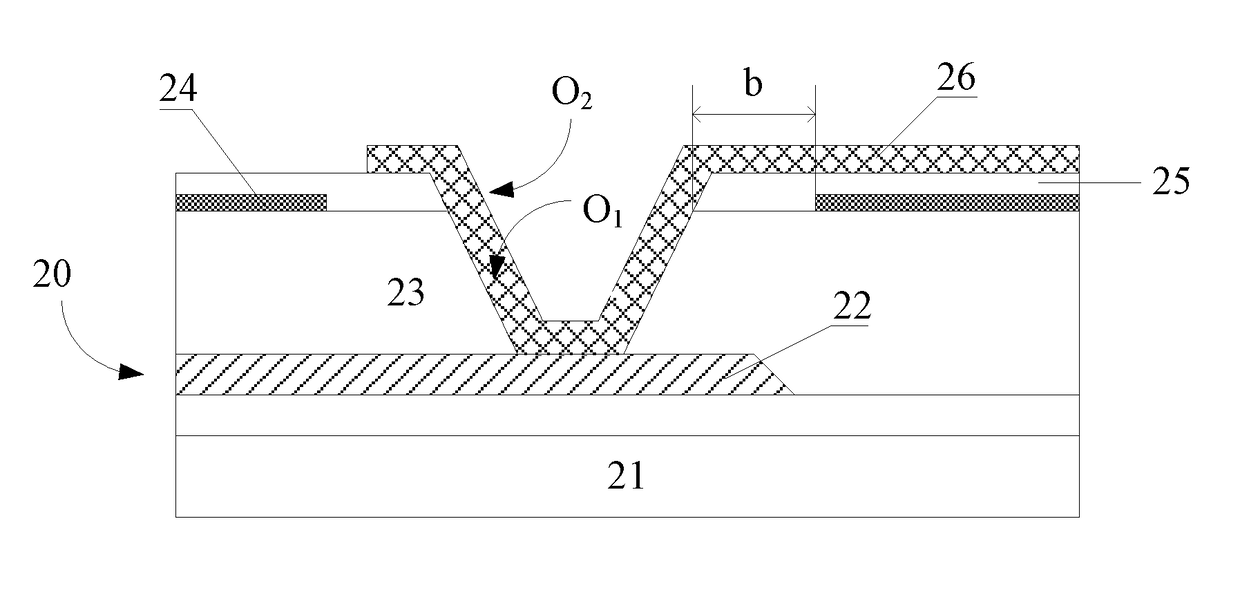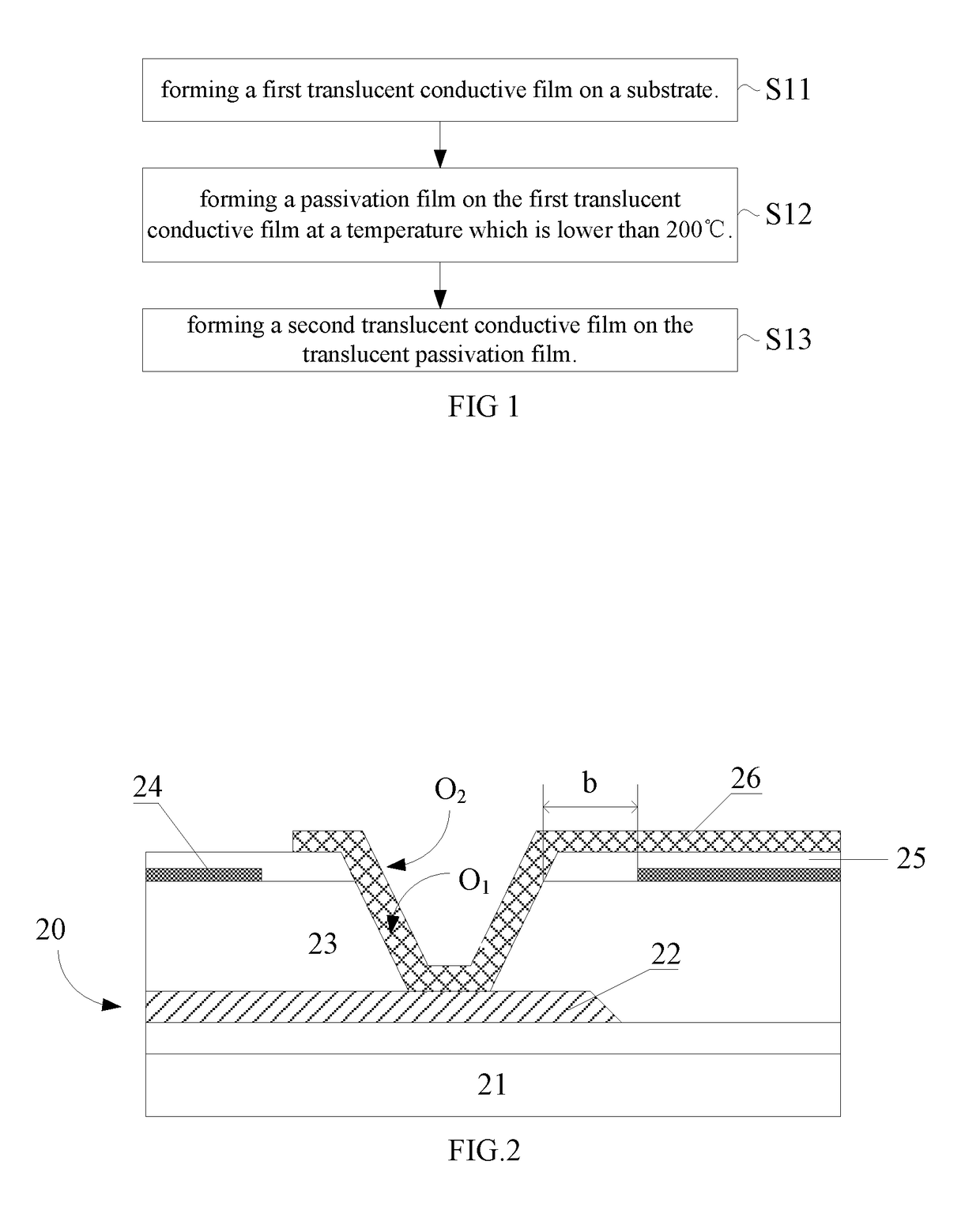Manufacturing method of array substrate, trnaslucent passivation film and liquid crystal display panel
- Summary
- Abstract
- Description
- Claims
- Application Information
AI Technical Summary
Benefits of technology
Problems solved by technology
Method used
Image
Examples
Embodiment Construction
[0027]The present disclosure will now be described more specifically with reference to the following embodiments. It is to be noted that the following descriptions of embodiments are presented herein for purpose of illustration and description only. It is not intended to be exhaustive or to be limited to the precise form disclosed.
[0028]FIG. 1 is the schematic of manufacturing flow of an array substrate of one embodiment of the present disclosure. This embodiment is to manufacture a structure with three films, which includes a first translucent conductive film, a passivation film, and a second translucent film. With reference to FIG. 1, the manufacturing process comprises:
[0029]S11: forming a first translucent conductive film on a substrate.
[0030]S12: forming a passivation film on the first translucent conductive film at a temperature which is lower than 200° C.
[0031]S13: forming a second translucent conductive film on the translucent passivation film.
[0032]The materials of the firs...
PUM
 Login to View More
Login to View More Abstract
Description
Claims
Application Information
 Login to View More
Login to View More - R&D
- Intellectual Property
- Life Sciences
- Materials
- Tech Scout
- Unparalleled Data Quality
- Higher Quality Content
- 60% Fewer Hallucinations
Browse by: Latest US Patents, China's latest patents, Technical Efficacy Thesaurus, Application Domain, Technology Topic, Popular Technical Reports.
© 2025 PatSnap. All rights reserved.Legal|Privacy policy|Modern Slavery Act Transparency Statement|Sitemap|About US| Contact US: help@patsnap.com



